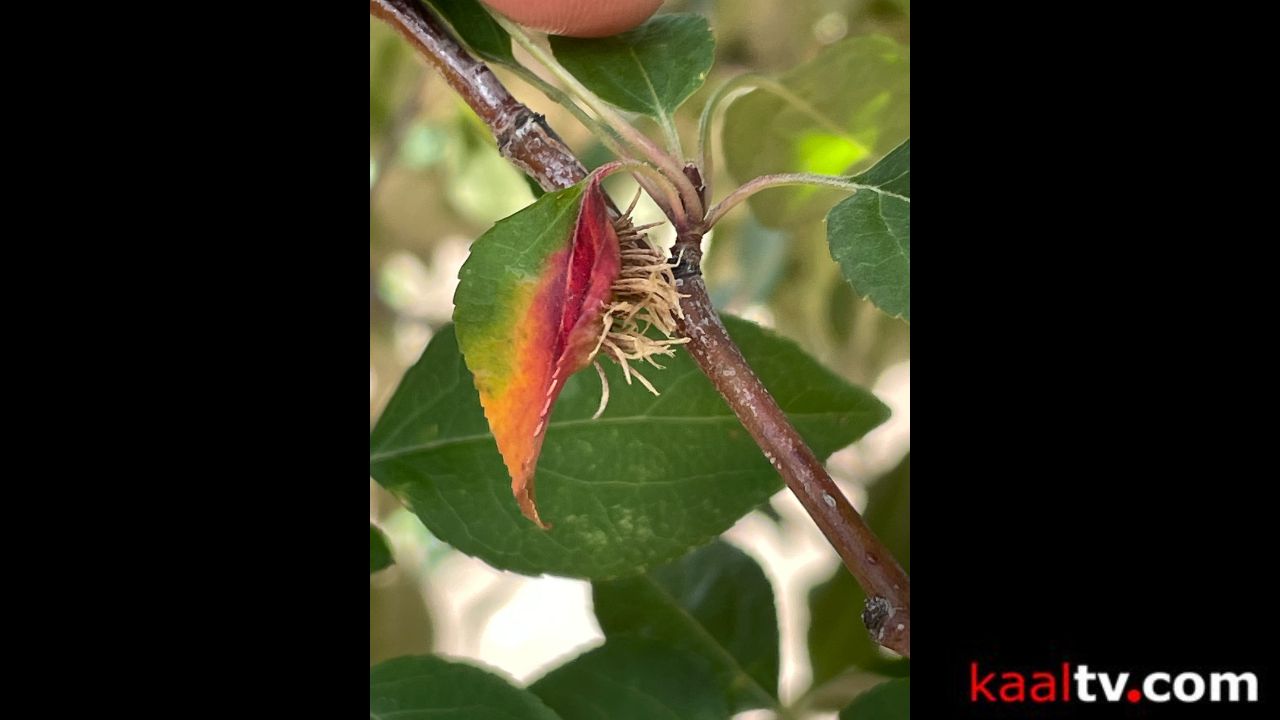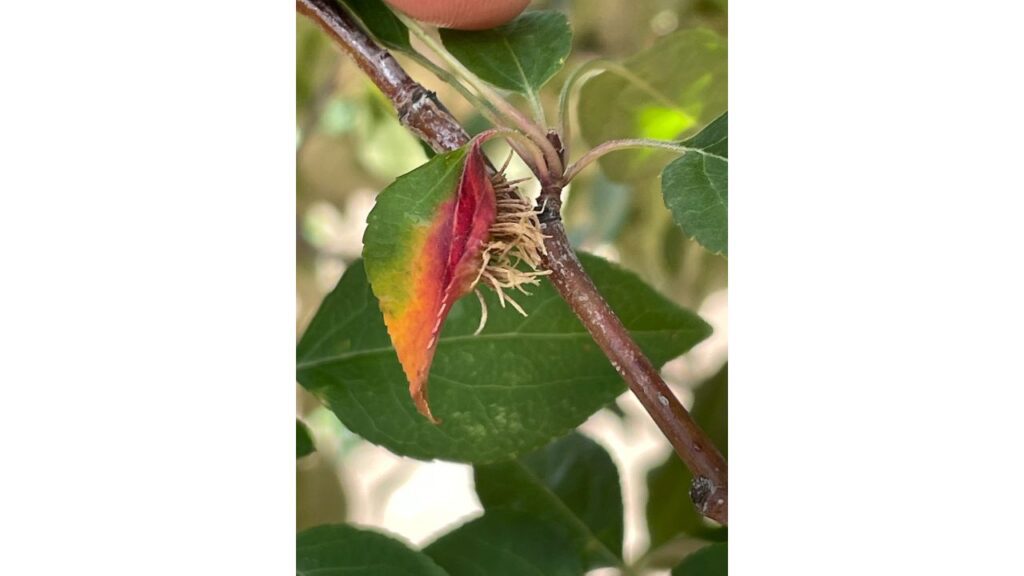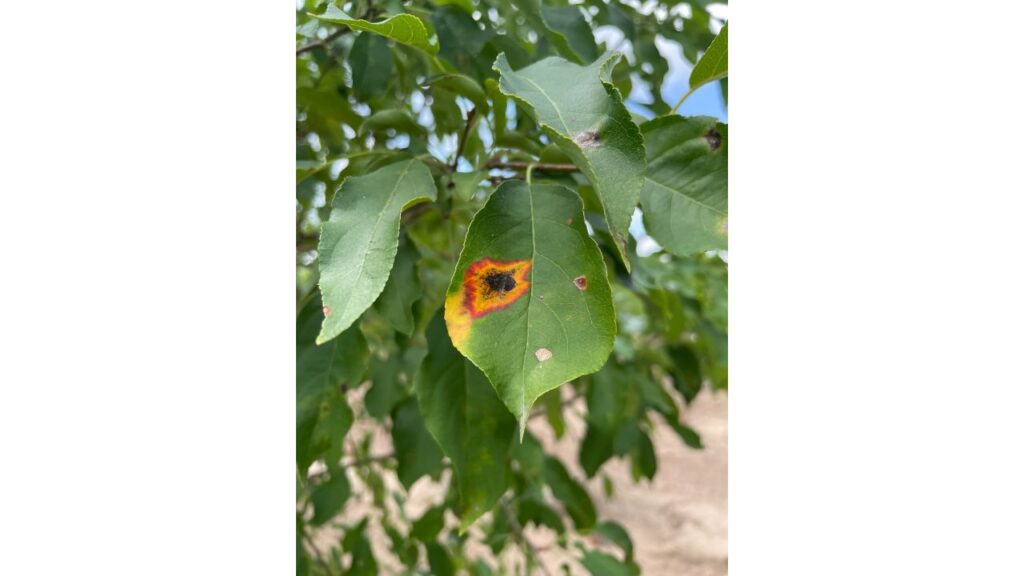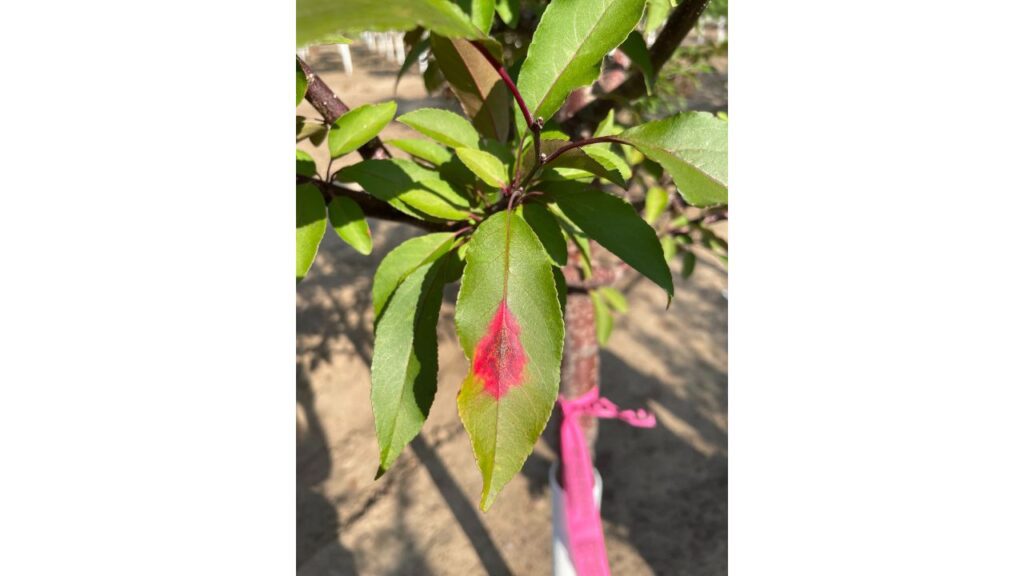Disease affecting apple trees discovered in Minnesota

Japanese apple rust / Courtesy: Minnesota Department of Agriculture
(ABC 6 News) – Japanese apple rust, a disease affecting apples, crabapples, and junipers has been confirmed in Minnesota for the first time, according to the Minnesota Department of Agriculture (MDA).
The disease is caused by the fungal plant pathogen Gymnosporangium yamadae. It is native to parts of Asia where it is a significant pest of apples and can ran result in defoliation of susceptible cultivars.
MDA staff recently discovered the fungus through surveys and routine inspections at several orchards and nurseries in Dakota, Rice and Scott counties.
Although new to Minnesota, this rust has been in the northeastern U.S. for 10 years or more.
It was found in Wisconsin in 2021.
“Discovering a new plant pathogen, like Japanese apple rust, is always a concern for our gardeners and farmers in Minnesota,” said Mark Abrahamson, Director of MDA’s Plant Protection Division. “However, as we’ve observed on the East Coast where Japanese apple rust has been prevalent for over a decade, there have been no significant impacts to apple production. We are cautiously optimistic that the same will be true in Minnesota.”
Japanese apple rust requires two different host plants to complete its life cycle, juniper and apple or crabapple.
The MDA has observed leaf spots on many different varieties of both crabapple and apple in Minnesota.
The leaf spots may be deep red, orange, or yellow with a red ring. Finger-like projections, which are fungal spore producing structures, can be seen on the lower leaf surface just below the spots.
The spores produced in leaf spots on apple and crabapple trees do not re-infect apple trees. Rather, these spores are carried by wind and infect junipers.
Japanese apple rust has not yet been observed on junipers in Minnesota.
The MDA says they will continue to work with apple growers and the nursery and landscape industry to learn more about the impact of Japanese apple rust.
To learn more about Japanese apple rust, CLICK HERE.


